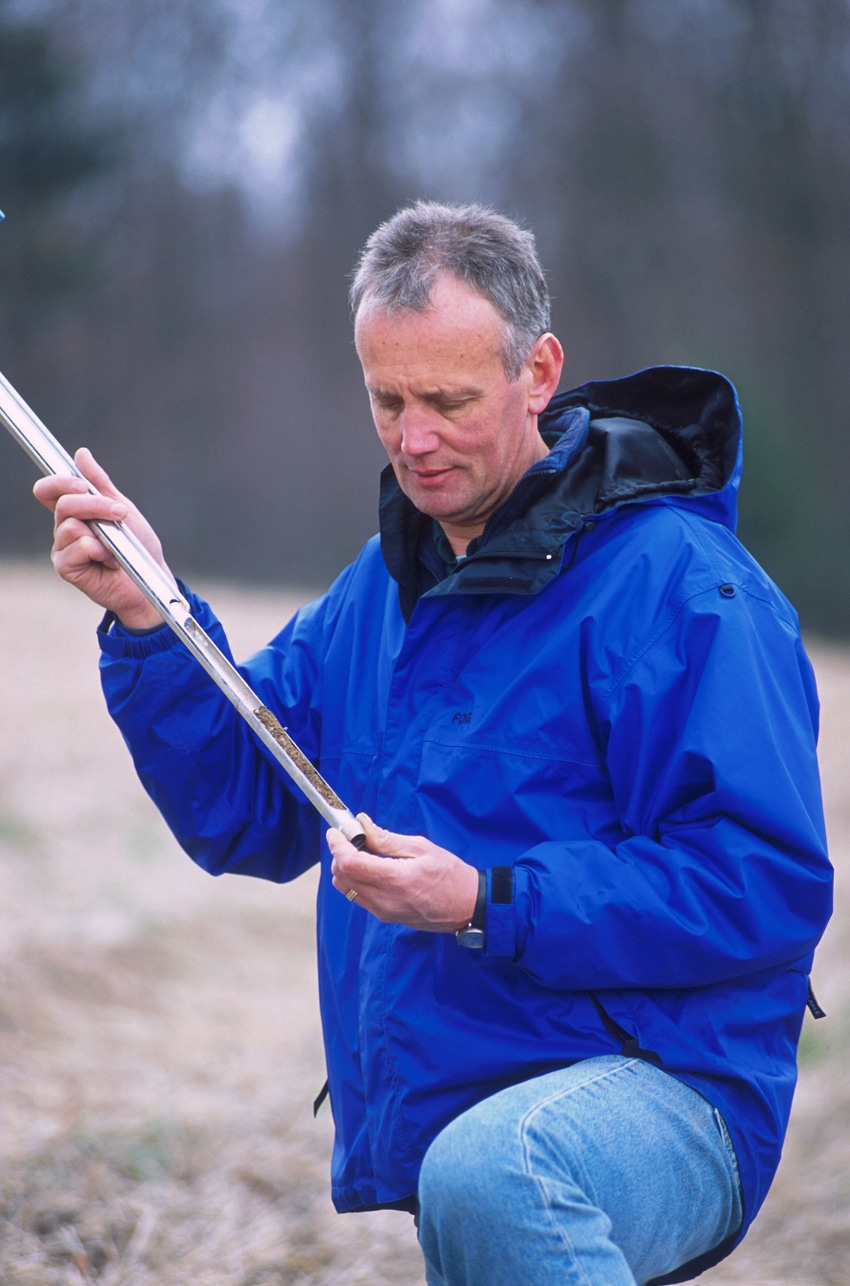August 30, 2016

Since the early 20th-century soil sampling has proven to be the ideal means to determine the amount of nutrients required for optimal crop production.
Thanks to advances in global positioning system (GPS) technology, site-specific soil sampling has gained much attention in more recent years. And as we are well into the 21st century, three popular methods for soil sample collection have emerged at the forefront of the industry. These methods include: 5-acre conventional sampling, 5-acre grid sampling, and 2.5-acre grid sampling.
However, two overarching types of sampling are typically compared: grid sampling versus conventional. So how do you or you and your customers decide which method is best for each operation?
Conventional
“First, look to the building blocks of each method to determine the pros and cons as they relate to the operation in question,” explains Scott Fleming, Rock River Laboratory soil sampling director. “The simplest method of soil sampling is the 5-acre conventional sampling method.”
This well-established sampling method breaks fields into similar areas around 5 acres in size. Then, 10 or more subsamples are pulled in a zig-zag or “W” pattern. These subsamples are combined to create a composite soil sample. “In Wisconsin, 5-acre conventional soil sampling is the minimum requirement for a Nutrient Management Plan (NMP),” adds Fleming.
Grid
Grid sampling is achieved by subdividing the field into smaller areas from which to collect the soil samples. “In this [grid] sampling scheme, 10 or more subsamples are pulled from a small area within the subdivided area,” says Fleming. “These subsamples are then combined to create a composite soil sample.”
Fleming goes on to explain that while each are very different sample-collection methods, it’s important to take a close look at the reasons for each method and how they can be tailored to an operation’s scheme for overall crop management from analysis results all the way through to application of nutrients for ideal output and harvest. A few considerations he highlights include:
Whole-field application
In conventional sampling, fields are managed on a whole-field basis rather than smaller sub divided management areas. “With this [conventional] scheme, fertilizer can be applied by a range of equipment rather than requiring specialized, variable rate equipment,” says Fleming. “Variable Rate Technology [VRT] allows for spreading fertilizer down to .01 of an acre.”
He adds that many fertilizer spreaders are also able to apply two nutrients at once. This technology development cuts the number of trips across the field in half - saving the grower money - something we can all appreciate in a year of low prices.
Up-front costs
Grid sampling brings with it a higher initial cost, while conventional sampling schemes carry lower up-front costs. Savings gained through grid sampling occur on a long-term basis through targeted fertilizer and lime applications. “The exact savings will not be seen until samples are analyzed,” says Fleming. “Only then will the grower see the exact amount of variability within the field.”
He also explains that when examining the cost and benefit of any sampling program, it’s important to remember that sampling is only required once every four years. Generally, the additional cost for an upgraded sampling program is less than a bushel of corn a year. Conversely, the potential for savings and yield increases far exceed the cost of ANY sampling program.
Variability
When looking at a field, it’s easy to see how, unlike a pan of your mom’s famous seven layer bars, there is variability in the soil layers. Soil type, yield removal, and uneven nutrient application can all contribute to this variability. “Grid sampling paints an accurate picture of a field’s varying fertility,” explains Fleming. “However, conventional sampling describes the average fertility level across the field, but doesn’t account for the variability within the field.”
Repeatability
“One major advantage when grid soil sampling is repeatability. When re-sampling a field, GPS technology allows the sampler to simply navigate to the location of the previous sampling event and pull the new sample,” says Fleming.
This sampling event repeatability allows for a more accurate tracking of nutrients between sampling events. Fleming goes on to explain that the more accurate the tracking of nutrients can be, the more dialed in fertilizer recommendations become, allowing for less waste of added nutrients – saving both the environment and the grower’s pocketbook.
Recordkeeping
Oftentimes conventional sample locations are recorded on a paper map. Unfortunately, these paper maps have the potential to get lost or destroyed over the course of time and use. “With grid soil sampling the sample locations are stored on a computer and backed up in the cloud, says Fleming. “Never again will a paper sampling map get lost or destroyed.”
As we enter the new millennium, grower expectations are fast outpacing the limitations of 5-acre grid samples. Many growers have found benefit in modern soil sampling methods.
“To determine what sampling scheme fits your farm, look at the big picture,” says Fleming. “Consider what type of fertilizer sources and equipment are at your disposal? In these times of thin margins, what resources are available? How variable are your fields?
Could you benefit from increased repeatability and recordkeeping? No two farms are the same. What works on your farm may not work at all on your neighbor’s property.”
In fact, growers may not even use the same sampling scheme throughout their entire operation. Fleming recommends all growers work closely with their trusted advisors and do what is best for your operation to reap the real value of soil sampling you or your clients’ acreage.
Rock River Laboratory provides production assistance to the agricultural industry through the use of advanced analytical systems, progressive techniques, and research-supported analyses. Employing a team of top specialists in their respective fields, Rock River Laboratory is built on providing accurate, cost-effective, and timely analytical results to customers, while featuring unsurpassed customer service.
You May Also Like




